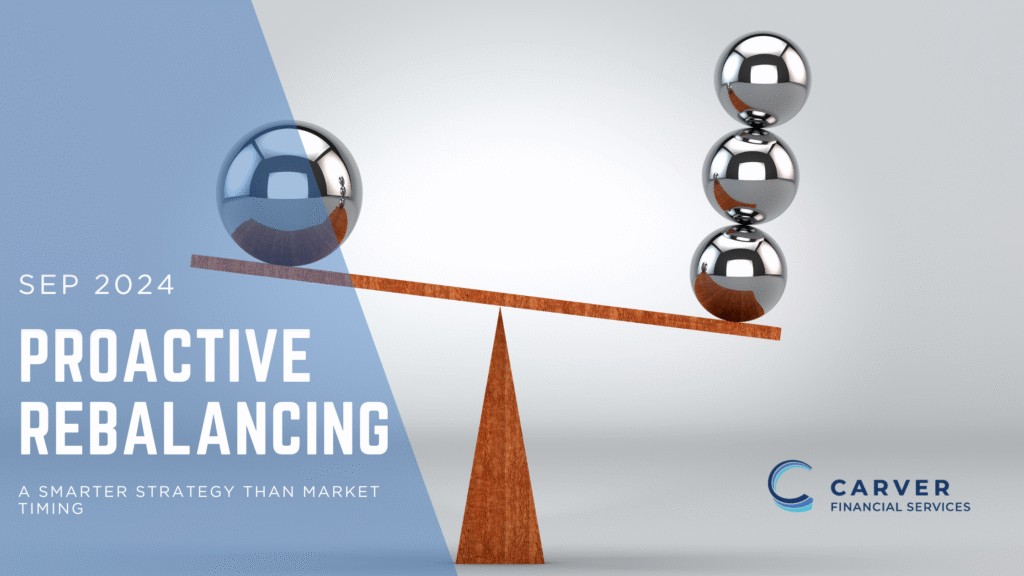
Why “Timing the Market” Rarely Works
For decades, investors have tried to outsmart the market — selling before downturns and buying before recoveries. The idea sounds appealing: avoid losses and capture gains. But the truth is, market timing doesn’t work consistently. Even professionals rarely get it right.
Trying to predict short-term market movements can lead to missed opportunities, higher fees, and unnecessary taxes — not to mention emotional stress.
At Carver Financial Services, we believe long-term success doesn’t come from predicting the market; it comes from preparing for it.
The Hidden Cost of Market Timing
Market timing is based on the belief that you can accurately forecast future prices — yet global markets are influenced by countless unpredictable factors: economic data, interest rates, elections, and investor sentiment.
Even missing just a few of the market’s best days can devastate long-term returns:
- 78% of the market’s best days occur during bear markets or in the first two months of recovery.
- Missing just the 10 best days over 30 years could cut your total return in half.
- Missing the 30 best days could reduce returns by more than 80%.
That’s because market rebounds often happen fast — and most investors who try to time the market are sitting on the sidelines when those rallies occur.
Emotion plays a major role.
When markets fall, fear drives people to sell. When prices rise, greed tempts them to buy back in — often too late. This reactive cycle leads to underperformance and erodes confidence over time.
The better path? Stay invested — and focus on balance, not prediction.
Why “Buy and Hold” Isn’t Always Enough
The buy-and-hold strategy — purchasing investments and keeping them for the long term — remains a cornerstone of disciplined investing. Over time, markets tend to rise despite short-term volatility.
However, strict buy-and-hold can overlook opportunities to adjust when conditions, tax laws, or your personal goals change.
In a world where algorithms and automated portfolios dominate, too many investors are placed into one-size-fits-all strategies that don’t reflect their unique financial picture.
Your life, goals, and tax situation evolve — and your investment strategy should evolve with them.
The Case for Proactive Rebalancing
Proactive rebalancing is a disciplined yet flexible approach.
Rather than reacting to market swings, it involves regularly reviewing and adjusting your portfolio to keep it aligned with your goals, risk tolerance, and current conditions.
Here’s what makes it so effective:
1. Maintains the Right Risk–Reward Balance
Over time, market performance can shift your portfolio’s weight. Rebalancing brings it back in line — ensuring you’re not taking on too much (or too little) risk.
2. Helps Capture Opportunities
When markets fluctuate, proactive rebalancing allows you to buy undervalued assets and trim overvalued ones — effectively buying low and selling high, but in a disciplined, data-driven way.
3. Enhances Tax Efficiency
Strategic rebalancing can involve realizing losses to offset gains or shifting assets into tax-advantaged accounts. These moves help keep more of what you earn — because in investing, it’s not what you make, it’s what you keep.
4. Adapts to Life Changes
Your financial strategy should reflect where you are today — not where you were five years ago. Rebalancing adjusts for new goals, income changes, or milestones like retirement, ensuring your plan evolves with you.
Investing with Intention, Not Emotion
Investing should support your life — not consume it.
Proactive rebalancing gives you a framework to act rationally, not react emotionally. It replaces guesswork with structure and allows you to focus on what truly matters: having cash flow for today, growth for tomorrow, and confidence for life.
At Carver Financial Services, our dedicated team of professionals integrates proactive rebalancing into every client plan.
We tailor each portfolio to reflect your vision, lifestyle, and tax situation — helping you stay invested, stay balanced, and stay on course.
Conclusion: Prepare, Don’t Predict
Market timing is speculation.
Proactive rebalancing is strategy.
By maintaining diversification, aligning with your long-term goals, and adjusting thoughtfully to change, you can enhance returns, improve tax efficiency, and reduce stress — without ever needing to “call” the market.
Our team is here to help you build a plan designed for real life, not for short-term market noise.
Reach out anytime — we’ll help you create a portfolio that evolves with you and stands the test of time.
Any opinions are those of Randy Carver and not necessarily those of Raymond James. This material is being provided for information purposes only and is not a complete description, nor is it a recommendation. The information has been obtained from sources considered to be reliable, but we do not guarantee that the foregoing material is accurate or complete.
Raymond James and its advisors do not offer tax or legal advice. You should discuss any tax or legal matters with the appropriate professional. Rebalancing a non-retirement account could be a taxable event that may increase your tax liability.
This information is not a statement of all available data necessary for making an investment decision, and it does not constitute a recommendation. All opinions are as of this date and are subject to change without notice. Investing involves risk and you may incur a profit or loss regardless of strategy selected, including asset allocation and diversification. Past performance is not a guarantee of future results.
The S&P 500 is an unmanaged index of 500 widely held stocks that is generally considered representative of the U.S. stock market. Keep in mind that individuals cannot invest directly in any index, and index performance does not include transaction costs or other fees, which will affect actual investment performance. Individual investor’s results will vary.

 Why Invest Beyond Making Money: To Achieve Your Personal Vision
Why Invest Beyond Making Money: To Achieve Your Personal Vision












